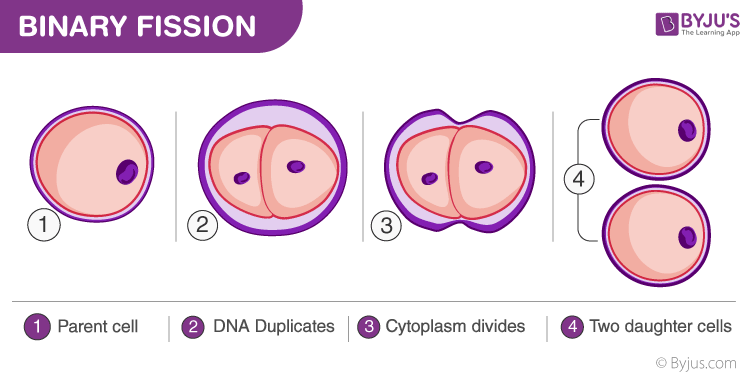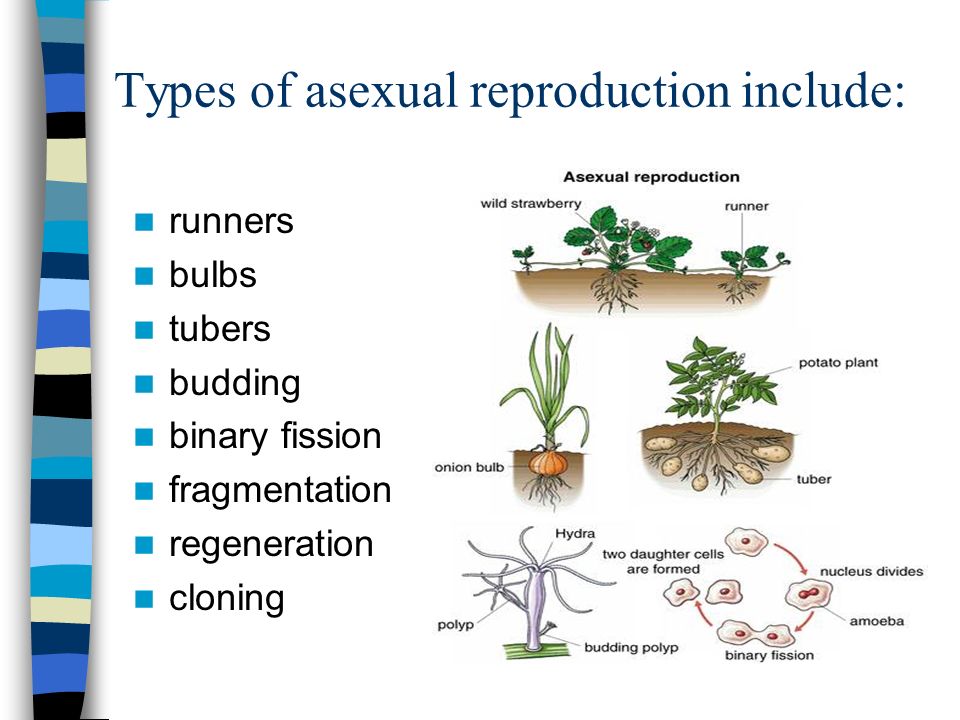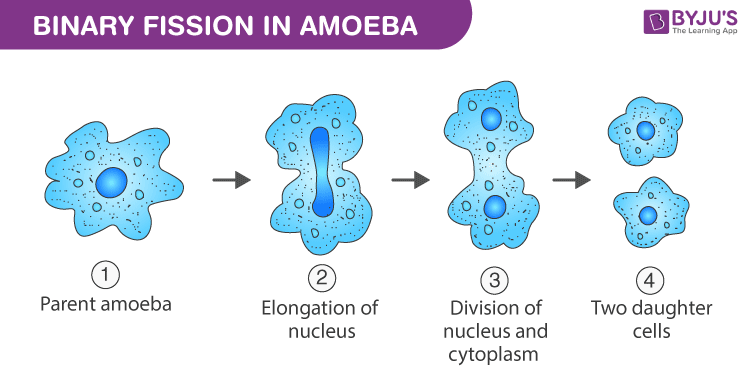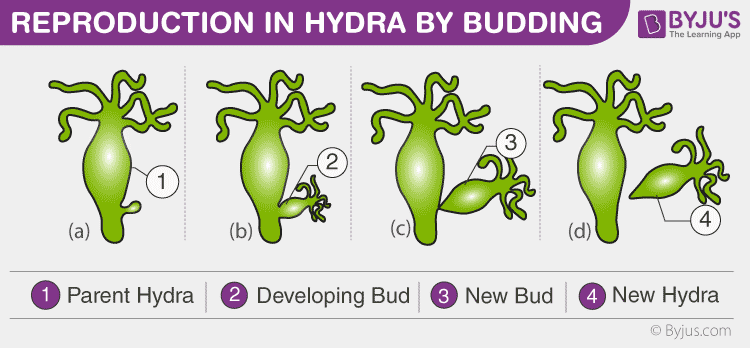Define Binary Fission And Budding
Bipartition or binary fission is a mechanism of asexual reproduction of unicellular living beings typical of prokaryotes that is of bacteria and archaea. What is binary fission.
 Difference Between Budding And Spore Formation Compare The Difference Between Similar Terms
Difference Between Budding And Spore Formation Compare The Difference Between Similar Terms
It is a type of fission.

Define binary fission and budding. Binary fission is a type of fission that is shown by bacteria and archaea to the multiplication of cells. Binary fission and budding are two variations of asexual reproductionfound in bacteria and fungi respectivelyBinary fission is mostly found in prokaryotes Budding is. Step 2 of budding.
The binary fission process is used by bacteria to replicate quickly and compete with other simple organisms. Binary fission is the primary method of reproduction of prokaryotic organisms. Budding and binary fission are types of asexual reproduction observed in lower organisms such as bacteria unicellular protozoans and some other entities.
Asymmetric division of the parent cell. What is Binary Fission. Binary fission and budding are two asexual reproduction methods found in simple organisms.
Another way for an organism to reproduce asexually. It is also a type of asexual reproduction. The formation of new bud from the parent organism is known as budding.
Binary fission is an asexual reproduction process that prokaryote organisms use to duplicate themselves. In protists binary fission is often differentiated into types such as transverse or longitudinal depending on the axis of cell separation. In this type of reproduction the parent cell divides or is split into two daughter cells through mitosis wherein each daughter cell develops into an adult.
Bud grows until eventually it grows off and becomes independent. An asexual mode of reproduction where the parent cell divides equally to form two daughter cells. Binary fission differs from other types of fission in that.
Binary fission mostly occurs in prokaryotes like bacteria. Step 1 of budding. On the other hand budding is a type of vegetative propagation which is shown by fungi and plants.
Does binary fission involve mitosis. To overcome this one of the ways that prokaryotes like bacteria have developed to add genetic diversity to their DNA is conjugation. Bud becomes identical to parent cell.
Budding can be observed in fungi plants animals like metazoans and parasites. Regular transverse fission in some organisms such as tapeworms and scyphostome polyps is called strobilationCommonly this results in a chain called a strobilus of the. Only two parts are formed from a single entity.
There is no exchange of genetic information between organisms during binary fission so over time populations can experience a lack of genetic diversity. Binary fission is a type of asexual reproduction where a single living cell or an organelle grows twice its size and then splits into two identical daughter cells where each of these daughter cells has the potential to grow into the size of the original cell or organelle. It is an asexual reproduction method.
Binary fission is a type of fission and budding is a type of asexual propagation. Tiny bud forms an organism. Symmetric division of the parent cell.
Step 3 of budding. A type of vegetative propagation where the new organism develops as an outgrowth from the body of the parent organism. Binary fission could be defined as a mode of asexual reproduction by which an organism separates into two parts each carrying its own genetic material.
It consists of the duplication of the individuals cellular DNA as a previous step to dividing the cytoplasm in two. Binary fission is a fission process whereas budding is a type of artificial process like vegetative propagation. It is a type of vegetative propagation.
Binary fission is the separation of a parent cell into two daughter cells while budding is the production of an entire individual from the existing parent cell. Binary fission is the process by which prokaryotic cells split into new cells. The division of the cells into two daughter cells is known as binary fission.
A parent cell creates identical daughter cells through DNA replication and cell division into two equal parts. If we further define binary fission it is the primary method of reproduction in a prokaryotic organism.
 Difference Between Binary Fission And Budding Compare The Difference Between Similar Terms
Difference Between Binary Fission And Budding Compare The Difference Between Similar Terms
 Difference Between Binary Fission And Budding Physics Q A
Difference Between Binary Fission And Budding Physics Q A
Difference Between Binary Fission And Budding Mechanism Types Comparison
 Write One Difference Between Binary Fission And Budding Youtube
Write One Difference Between Binary Fission And Budding Youtube
Asexual Reproduction In Animals Learn Biology Class 8 Amrita Vidyalayam Elearning Network
 Studying Binary Fission In Amoeba And Budding In Yeast
Studying Binary Fission In Amoeba And Budding In Yeast
 Difference Between Binary Fission And Budding Brainly In
Difference Between Binary Fission And Budding Brainly In
 Types Of Asexual Reproduction Binary Fission Budding Regeneration Sporogony Parthenogenesis Tissues Culture Science Online
Types Of Asexual Reproduction Binary Fission Budding Regeneration Sporogony Parthenogenesis Tissues Culture Science Online
 Studying Binary Fission In Amoeba And Budding In Yeast
Studying Binary Fission In Amoeba And Budding In Yeast
 Differentiate Between Binary Fission And Budding Four Point Brainly In
Differentiate Between Binary Fission And Budding Four Point Brainly In

 Pdf Difference Between Binary Fission And Budding
Pdf Difference Between Binary Fission And Budding
 Differentiate Between The Following Binary Fission And Budding Biology Shaalaa Com
Differentiate Between The Following Binary Fission And Budding Biology Shaalaa Com
Difference Between Binary Fission And Budding Mechanism Types Comparison
 Difference Between Binary Fission And Budding Physics Q A
Difference Between Binary Fission And Budding Physics Q A
Difference Between Fission And Fragmentation Pediaa Com
 Difference Between Multiple Fission And Fragmentation Compare The Difference Between Similar Terms
Difference Between Multiple Fission And Fragmentation Compare The Difference Between Similar Terms
 Topic Reproduction And Development Aim How Do Cells Divide Do Now Explain The Differences Between Sexual And Asexual Reproduction What Types Of Things Ppt Download
Topic Reproduction And Development Aim How Do Cells Divide Do Now Explain The Differences Between Sexual And Asexual Reproduction What Types Of Things Ppt Download

Post a Comment for "Define Binary Fission And Budding"